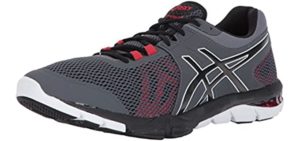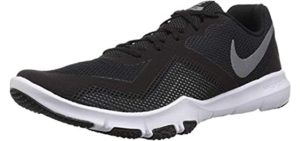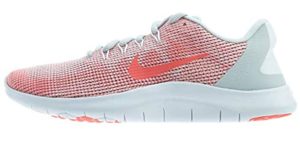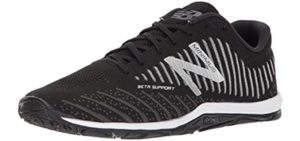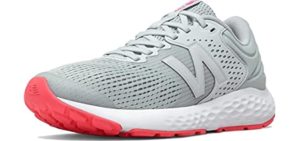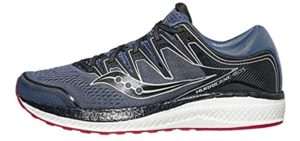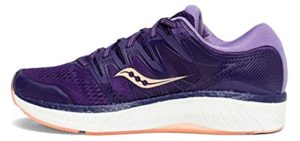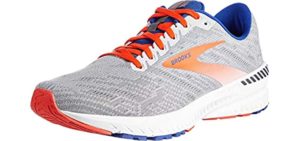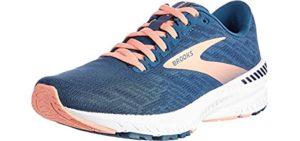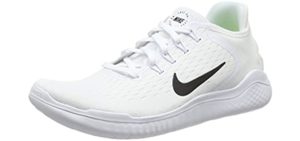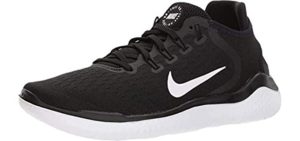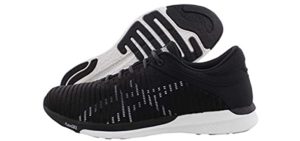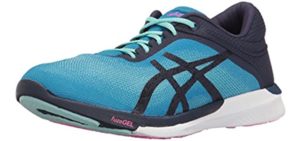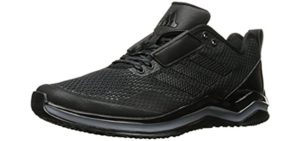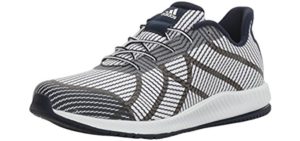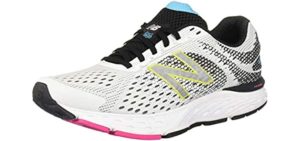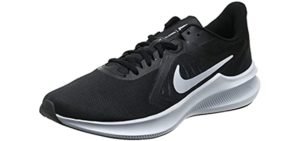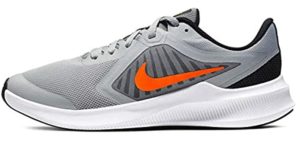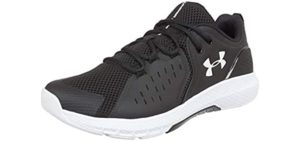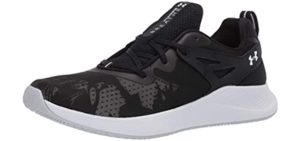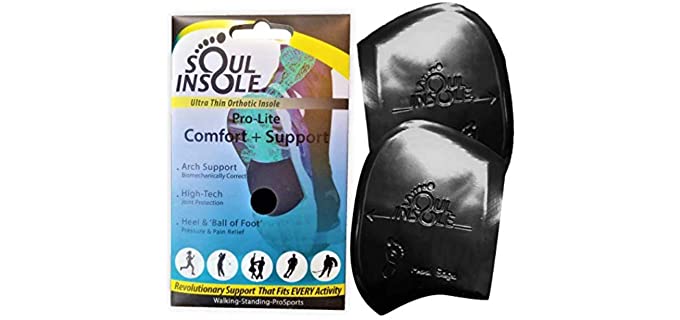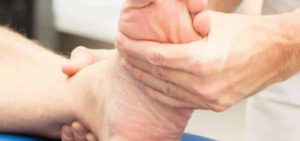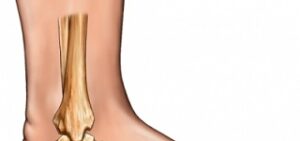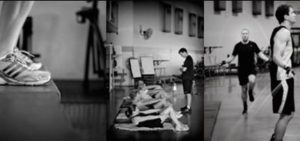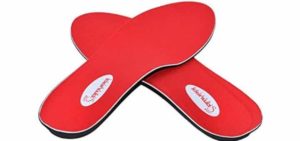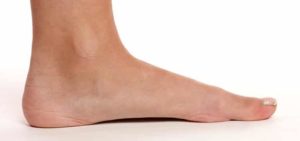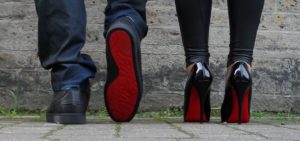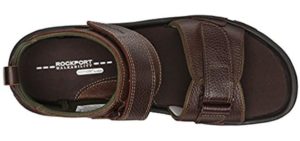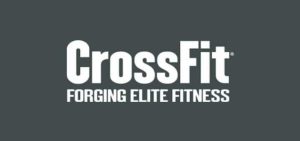Cross-training is one of my favorite exercise methods. It improves overall fitness and keeps me super fit. Having the right pair of cross-trainers for the job has always been important.
Until recently, I had some foot pain, particularly my heels. After a visit to a sports shoe store, I discovered that I have a flat foot or fallen arch.
Discovering that I have flat feet was a revelation, but it also brought relief. I now know that I need specific sports shoes for my cross-training exercises, designed to provide the comfort and support my flat feet require.
There are several features to look for when choosing cross-training shoes for flat feet:
Arch support: Flat feet typically lack the normal arch in the midfoot, so it’s important to look for shoes with good arch support to help keep your feet properly aligned.
Cushioning: Flat feet often put extra strain on the heels and balls, so shoes with good cushioning can help absorb shock and reduce strain on these areas.
Motion control: Cross-training shoes with motion control features can help to reduce overpronation, which is the excessive inward rolling of the foot. This condition is common in people with flat feet and can lead to various issues. The motion control features in shoes help to correct this, providing stability and preventing potential injuries.
Sturdy heel counter: A sturdy heel counter is a part of the shoe’s structure that wraps around the back of the heel. It provides stability and support for the heel and ankle, which is crucial for individuals with flat feet during cross-training exercises.
Deep heel cup: A deep heel cup is a feature in the shoe’s design that cradles the heel, keeping it properly aligned. This helps to distribute the body’s weight more evenly, reducing strain on the feet and providing comfort during cross-training exercises.
Remember, it’s not just about the technical features. Comfort is key. Consider getting your feet measured by a professional and trying on several different brands and models to find the best fit. Your comfort matters.
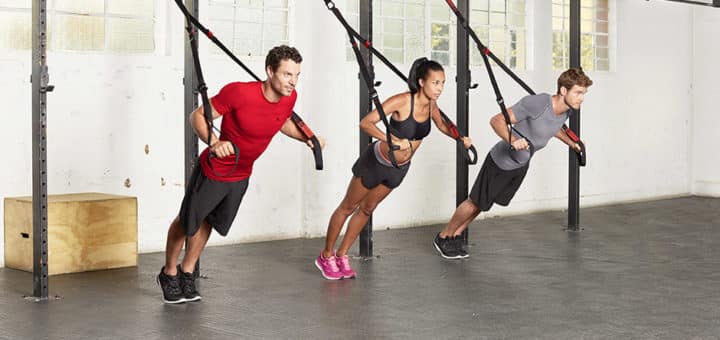
Table of Contents
- What are Cross Training Shoes
- Flat Feet and How They Affect You
- Related Articles of Cross Training Shoes
- Features of a Good Cross Training Shoe for Flat Feet
- How We Test and Score Cross Training Workout Shoes
- Frequently Asked Questions (FAQ) on Cross Training Workout Shoes
- Reviews: Best Cross Trainers for Flat Feet
- Fitness Shoe for Flat Feet
- Cross Trainer for Fallen Arches
- Mesh Cross Training Shoe for Flat Feet
- Running Shoe for Flat and Narrow Feet
- Wide Cross Training Shoes for Flat Feet
- Running Shoe for Cross Trainers with Flat Feet
- Cross Training Shoe for Flat feet
- Cross Training Shoes for Flat Feet
- Flat Feet Cross Training and Running Shoe
- Running and Cross Training Shoes for Flat Feet
- Cross Trainers for Flat Feet
- Best Insole for Cross Training Shoes
- Stability and Motion Control
- Finding the Best Cross Trainers for Flat Feet
- Is Running Shoes or Cross Training Shoes Better for Flat Feet
- Trainers for Flat Feet
- Steps in Preventing and Treating Flat Feet
- Index Table: Best Insole for Cross Training Shoes
- Index Table: Top-Rated Cross Training Shoes for Flat Feet
Before we can look at shoes for flat feet, let’s first look at exactly what makes a Cross Training shoe, a Cross-Training Shoe. I have done some research and found this interesting;
What are Cross Training Shoes
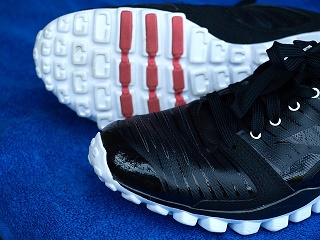
So what makes cross-training shoes different?
They are worn for sports and exercise routines, such as tennis, jogging, and weightlifting.
Cross trainers stabilize feet and ankles, improving lateral movements and providing the cushioning required for running and resistance training.
A cross-training shoe is an athletic or training shoe for different activities, including running.
Flat Feet and How They Affect You
Understanding the causes and implications of flat feet has empowered me to take control of my fitness journey. Whether it’s genetic or a result of sports injuries, I now have the knowledge to manage it effectively.
Fallen Arches or Flat Feet is quite a common and usually, painless foot condition where the arches on the inside of the feet are flattened so that your entire foot touches the floor when you stand.
Flat feet can also develop over the years as people age due to wear and tear, stress, and strain on their feet.
Flat feet can occur when your arches do not develop properly during childhood or result from an injury, medical condition, or being overweight.
- Symptoms of Flat Feet and Their Effects – Having Flat feet can alter your legs’ alignment, causing knee and ankle problems further in the future. You may experience foot pain, particularly in the heel and arch area, which worsens with certain activities you perform. Many people who have flat feet also suffer from a condition called Plantar Fasciitis.
- Complications Caused by Flat Feet – Flat feet are mostly painless and quite comfortable, although sometimes it will cause pain in your feet and body.
- Some complications I have seen and experienced in Flat feet include: Pain shooting up from the foot to the waist, sore or aching feet after a walk or run, the bottom region of your foot becomes swollen, and you find it hard to move your feet smoothly. With these problems, walking and running shoes for flat feet will help you prevent these complications by adding maximum support and stability.
- Flat feet Affect Cross Training – With running during cross-training, having flat feet forces me to use a slightly different gait method, which results in pronation. With this gait cycle, my ankle turns outward further than normal, resulting in various muscle groups being worked. Although this is not too much of an issue, it is still important to consider that normal running or cross-training shoes are made for normal arches that do not need added support. If I choose to wear these, I will become more susceptible to conditions such as shin splints, back problems, tendinitis, and an increased chance of twisting an ankle.
- Best Shoe Options for Flat Feet – Generally, when training and athletic shoes for flat feet, you will look for stability or motion control shoes with a more rigid sole and shock-absorbing cushioning. The insoles for flat feet to support your arch type are likewise required.
Related Articles of Cross Training Shoes
Features of a Good Cross Training Shoe for Flat Feet
- Uppers – Cross trainers need breathable, flexible uppers with a snug fit. Mesh, synthetic and genuine leather options are good choices.
- Support – You will need proper arch support, cushioning, and shock-absorbing midsole. The sole needs to be more rigid, and you will need stability features. The sole of the shoe should be flexible but not floppy. It should move with your foot and provide support while you walk or stand.
- Comfort – A good cross-training shoe for flat feet should offer a comfortable feeling when it’s used and help you perform at your best.
- Outsole – Look for a durable high-traction rubber outsole for cross-training, that will last.
How We Test and Score Cross Training Workout Shoes
These reviews are based on intense research, analysis, and feedback from our experts and real users from different digital platforms.
We spent 28 hours trying, testing, and scoring these Cross-Training Workout Shoes on key parameters. Then, we shortlisted the best products in the market, saving you time and effort.
We used the following parameters for our tests and analysis.
- Arch Support – We checked how well the shoes support the foot arch.
- Cushioning – We compared the cushioning provided by the shoes.
- Alleviate Pain – We checked how effectively the shoes solve many foot problems, including plantar fasciitis.
- Breathability – We checked if the fabric of the shoes is breathable or whether it causes any sweating.
- Sweat-Free – We observed how effectively these shoes absorb or prevent sweat.
Frequently Asked Questions (FAQ) on Cross Training Workout Shoes
- What is cross-training shoe?
Cross training shoes, also known as trainers or cross trainers, are a type of hybrid athletic shoe that allows athletes to move in different ways. Their design incorporates features like tennis, running, and volleyball shoes. - Are cross-training shoes good for the gym?
Cross-training shoes are perfect for high-intensity training, short cardio routines, and sessions on exercise machines. Similarly, the flatter soles provide stability and support for weightlifting and other resistance training activities. - Why is it essential to use cross-training shoes?
One of the reasons why cross training shoes are important is that these shoes are typically designed to increase awareness between your feet and the ground to add stability to your movements. - What are the benefits of using cross-training shoes for flat feet?
Cross-training shoes for flat feet are beneficial because they support the arch and absorb shock from different sports and exercises. These shoes enable you to engage in various activities with maximum support and stability.
Reviews: Best Cross Trainers for Flat Feet
Here are a few of my best picks for cross trainers that will provide the required support and stability for flat feet or fallen arches;
We hope you love the cross training workout shoes we recommend!
We may collect a share of sales or other compensation from the links on this page.
1
Fitness Shoe for Flat Feet
- It is made from high-quality synthetic materials with a rubber sole.
- Built-in flex grooves allow for smooth and natural rotation of the foot.
- The midsole is designed with enhanced cushioning.
- A padded tongue and collar for extra comfort.
- FluidRide technology provides bounce-back and extra cushioning.
- The flexible FluidAxis technology provides smooth lateral movement.
- Breathable mesh uppers and supportive logo overlay at the sides of the shoe.
- Available in different color options.
Pros
- FluidRide bounce-back technology.
- Variety of colors and sizes available.
- Mesh uppers.
Cons
- No wide sizes.
| Rating Category | Weight % | Score |
|---|---|---|
| Arch Support | 25% | 100 |
| Cushioning | 25% | 100 |
| Alleviate Pain | 20% | 95 |
| Breathability | 20% | 90 |
| Sweat-Free | 10% | 95 |
| Total Score | 100% | 96.5 |
2
Cross Trainer for Fallen Arches
- Breathable mesh uppers to keep your feet dry and comfortable.
- A rubber sole that offers excellent grip on different surfaces.
- A free-floating midfoot strap that wraps up from the midsole enhances lockdown support.
- The hexagonal flex grooves promote your foot’s natural motion and increase overall mobility.
- Outrigger for lateral stability and better multi-directional movement.
- It is cushioned to prevent shock on hard surfaces.
- Flexible and lightweight for easy movement.
- Available in a variety of colors.
Pros
- Variety of colors and sizes available.
- Offers maximum support.
- Very comfortable.
Cons
- Thin mesh.
| Rating Category | Weight % | Score |
|---|---|---|
| Arch Support | 25% | 100 |
| Cushioning | 25% | 95 |
| Alleviate Pain | 20% | 95 |
| Breathability | 20% | 90 |
| Sweat-Free | 10% | 95 |
| Total Score | 100% | 95.25 |
3
Mesh Cross Training Shoe for Flat Feet
- It is made from the best quality fabric and synthetic materials.
- An 8mm heel-to-toe drop.
- An extremely comfortable and cushioned EVA midsole and footbed.
- The REVlite midsole foam ensures excellent shock absorbency along with Meta comfort support.
- Visible forefoot flexes well for improved lateral movement and excellent traction.
- An added comfort insert with a heel pillow.
- A sturdy and durable Vibram outsole and a molded external counter.
- An excellent choice for fallen arches and knee pain.
- Available in many variations.
Pros
- Support.
- Durability.
- Comfort.
- Sweat and odor free.
Cons
- Light mesh.
| Rating Category | Weight % | Score |
|---|---|---|
| Arch Support | 25% | 100 |
| Cushioning | 25% | 95 |
| Alleviate Pain | 20% | 95 |
| Breathability | 20% | 90 |
| Sweat-Free | 10% | 90 |
| Total Score | 100% | 94.75 |
4
Running Shoe for Flat and Narrow Feet
- Lightweight and breathable synthetic and mesh uppers.
- A Carbon Rubber outsole for high wear resistance and excellent traction.
- The IBR outsole in the forefoot area made from a new injection-blown rubber compound gave better energy absorption and enhanced cushioning.
- An improved fit and lightweight responsiveness.
- A more secure heel fit because of the redesigned support frame.
- Excellent cushioning.
- A perfect shoe for flat and narrow feet.
- True to its size, so no need to size up or size down.
- Available in a few fantastic color designs.
5
Wide Cross Training Shoes for Flat Feet
- A Moisture-managing Element mesh upper for protection and breathability.
- A cushioned tongue and collar for extra comfort.
- Breathable Element linings that wick away moisture.
- The removable molded foam insole provides comfort and support.
- A DRB Accel shanks for torsional rigidity in the midfoot, allowing the heel and forefoot to act independently.
- Heel and midfoot crash pad to reduce shock.
- Long-lasting durability.
- Segmented heel for smoother transitions.
- The Flextra rubber outsole gives varied support and flexibility.
6
Running Shoe for Cross Trainers with Flat Feet
- Breathable mesh uppers with a Textured mesh full inner sleeve for a sock-like fit, easy on and off, as well as superior breathability and ventilation, keeping your feet ultra-dry and cool.
- The asymmetrical lacing system reduces pressure on the foot’s top ridge for a more comfortable fit.
- Diagonal cuts through the supportive arch encourage natural motion increasing foot strength and providing the ultimate arch support.
- A durable rubber outsole delivers exceptional long-lasting traction.
- The Nike Free 5.0 is available in many vibrant colors.
7
Cross Training Shoe for Flat feet
- A lightweight and low-to-the-ground design for speed and agility.
- A gel-cushioned platform provides ample support and a much better fit.
- Rearfoot cushioning helps to attenuate shock and improves movement.
- The Asics FuzeX TR cradles your feet in a snug and seamlessly constructed inner that is lightweight, breathable, and non-irritating to the feet.
- A padded collar and tongue provide a more stable and controlled fit.
- The removable contoured cushioned insole ensures superior comfort and support, along with better flexibility.
- The durable rubber outsole will keep you firm and secure on your feet.
- The FuzeX TR is available in a few color options.
8
Cross Training Shoes for Flat Feet
- A Crosstraining shoe built for the neutral to under-pronator.
- It is manufactured from durable and long-lasting multi-materials with an added toe and heel cap to safeguard you against wear and tear and provide you with a secure and comfortable fit.
- A non-slip lining inside the shoe offers exceptional comfort and will prevent irritation causing chafing and blisters.
- An extra layer of cushioning is used throughout the midsole for long-lasting comfort and support.
- The Adidas cross-training shoes will give you a feeling of fluidity with every step that you take.
9
Flat Feet Cross Training and Running Shoe
- The Engineered mesh uppers are breathable and offer a flexible and supportive fit.
- A cushioned and removable NB inserts and an Injection molded EVA midsole with ABZORB technology for shock absorbency.
- The sole is flexible and has a 10mm drop.
- You can also select from a few color options and different width options.
10
Running and Cross Training Shoes for Flat Feet
- You can get the Downshifter 9 range in many color options with breathable textile ad synthetic uppers.
- The fit is comfortable and snug for optimal support.
- Ther is ample underfoot cushioning with an articulated full-length midsole, and the now Sew foot saddle offers excellent stability.
- Flex grooves on the outsole provide flexibility and better traction.
11
Cross Trainers for Flat Feet
- The uppers are lightweight with mesh and synthetic materials.
- There is a leather midfoot saddle for comfortable support and an external Dual heel counter for added stability.
- The cushioned sock liner molds to the shape of your feet for optimal comfort and support.
- The Charged Cushioned midsole absorbs shock.
- There is also a durable high traction rubber outsole for further support and flexibility.
Best Insole for Cross Training Shoes
1
If you would prefer to give new life to the current pair of cross-training shoes, another option is to add shoe inserts. Shoe inserts can help to improve comfort and support while transforming a regular walking shoe into an orthopedic shoe. Soul Insole Shoe Bubble Pro-lite Orthotics are a patented memory gel foot support and the #1 choice by medical practitioners worldwide.
- Soul Insole Shoe Bubble Pro-lite orthotics gently guide the feet to alignment, training your foot to strengthen its natural muscles which leads to long-term relief from foot and leg pain, among other issues
- They work with your shoes to provide the ideal amount of arch support and posting to stop over-pronation
- Shoe Bubble orthotics come in multiple sizes and thicknesses for men, women, and children, and also fits in all kinds of footwear including sandals, dress shoes, and athletic shoes
- With their simple peel and stick adhesive backing, you can easily secure them in place. You may wash them as needed, and the adhesive will renew so you can move them from shoe to shoe.
- These comfortable memory gel orthotics feel like “walking on clouds” and since they are so small in size, they will not make your shoes too tight!
Stability and Motion Control
The two main types of shoes to consider in a cross-training shoe are stability or motion control shoes.
Stability Control shoes have a foam lining at the instep that cushions your arch and provides ample support and comfort to a flat foot because of the softly cushioned region under the low arch.
A Motion Control shoe is perfect for runners who suffer from severe overpronation.
When you tend to overpronate, You must choose to go with a Motion Control Shoe that supports the arches’ sides, making running and walking more comfortable.
Finding the Best Cross Trainers for Flat Feet
Understanding Pronation
Most people with flat feet or fallen arches usually tend to overpronate. Overpronation occurs when the foot tends to roll inwards excessively when it makes contact with the ground resulting in uneven distribution of impact as well as the inability of the foot to stabilize the body completely.
Therefore I find it vital to look for training shoes with the appropriate design and characteristics to remedy this issue. For more options in Cross Training shoes, you can consider the article Best Cross Training Shoes.
Arch Support
Having flat feet means that there is almost no cushioning for the impact when my feet land on the ground, and I use an arch supportive shoe, which makes up for the lack of natural support. An arch-supportive shoe will also minimize the impact on the feet and provide better cushioning.
The Effect of Pronation on your Ankles
During pronation with a flat foot, your ankles tend to turn either inward or outward excessively, called pronation; this might lead to your knees knocking each other when you run or walk.
Ankles that turn outwards excessively (supinate) or inwards excessively (Overpronate) may cause injuries because your feet lack the natural support for the weight of your body and cannot distribute the force from impact evenly.
Whether you overpronate or supinate, you will need cross-training shoes that provide sufficient support and thick cushioning around your ankles. Because I have flat feet, I tend to overpronate rather than supinate and need more cushioning and arch support.
Is Running Shoes or Cross Training Shoes Better for Flat Feet
In my experience, a cross-training shoe provides excellent arch and ankle support, and therefore it tends to be a bit heavier than a running shoe.
A running shoe is usually very lightweight but lacks extensive support for the arches and ankle.
I prefer a cross-training shoe for flat feet even though it is heavier because of the ample arch and ankle support to reduce impact and prevent over or under pronation.
Trainers for Flat Feet
In my opinion the Best trainers for flat feet will have the following qualities;
- Have stabilizing technology such as a stabilizing wedge on either side of the feet to prevent over or under pronation.
- Provide lateral stability to prevent your ankles from rolling out when you take part in certain activities.
- A lower heel for better support and stability.
- Good medial arch support.
- A stiff outer sole to resist your foot tendency to roll inward.
- Extra cushioning for a snug and comfortable fit.
Steps in Preventing and Treating Flat Feet
Here are a few steps you can follow to prevent and treat flat feet that I have found very useful;
- Arch support is one of the best factors in preventing and treating flat feet. You can use shoes with arch support or use insoles or shoe inserts that provide orthopedic arch support. Arch support is essential when you are on your feet for long periods.
- To help prevent your arches from becoming fallen and your feet flattening, you need to change your footwear during the day. I avoid wearing the same shoes for very extended periods or consecutive days. Wearing the same shoes, particularly unsupportive shoes each day, causes my feet to over-correct for the shoe’s lack of support and shape, leading to a flat foot. By changing shoes, my feet cannot adapt to a specific shape because of the form of that particular shoe.
- High heels, particularly narrow heels that force your feet into the front of the shoe and cause you to balance on that narrow heel, can render your arches almost useless. I would rather settle for a wider heel and wear heels for short periods only, changing into ‘commuter’ shoes in between.
- Any comfort shoe specialist can fit you with the correct type of shoes for your foot shape that will prohibit pronation.
- Keep your weight under control. I find that excessive weight exerts unnecessary pressure on my feet, knees, and ankles and will most definitely exacerbate flat feet. According to scientific studies, overweight people and children had significantly lower arches than healthy weight. You will notice a decrease in foot pain and many other side effects caused by excessive weight pressure on your feet and body by losing weight.
I have found that most Cross Training and running shoes have models that cater to a flat foot. It was not difficult for me to find the perfect fit for my flat feet. I can highly recommend the above-selected shoes, and I have personally tried out most of them.
Index Table: Best Insole for Cross Training Shoes
| No. | Shoe | Image | Features | Brand | Score |
|---|---|---|---|---|---|
| 1 | Soul Insole® - Memory Gel Insoles |
| Soul Insole | 98 |
Index Table: Top-Rated Cross Training Shoes for Flat Feet
| No. | Shoe | Men ♂ | Women ♀ | Features | Brand | Score |
|---|---|---|---|---|---|---|
| 1 | Asics® - Fitness Shoe for Flat Feet | Gel Craze TR4 | GEL Craze TR4 |
| Asics | 97.2 |
| 2 | Nike® - Cross Trainer for Fallen Arches | Flex | Flex |
| Nike | 95 |
| 3 | New Balance® - Mesh Cross Training Shoe for Flat Feet | Minimus 20V7 | 520V7 |
| New Balance | 98 |
| 4 | Saucony® - Running Shoe for Flat and Narrow Feet | Hurricane ISO 5 | Hurricane ISO 5 |
| Saucony | 96 |
| 5 | Brooks® - Wide Cross Training Shoes for Flat Feet | Stroke | Ravenna 11 |
| Brooks | 94 |
| 6 | Nike® - Running Shoe for Cross Trainers with Flat Feet | Free | Free |
| Nike | 96 |
| 7 | Asics® - Cross Training Shoe for Flat feet | FuzeX Rush Adapt | FuzeX Rush Adapt |
| Asics | 94 |
| 8 | Adidas® - Cross Training Shoes for Flat Feet | Performance | Gymbreaker |
| Adidas | 96 |
| 9 | New Balance® - Flat Feet Cross Training and Running Shoe | 680V6 | 680V6 |
| New Balance | 97.3 |
| 10 | Nike® - Running and Cross Training Shoes for Flat Feet | Downshifter 10 | Downshifter 10 |
| Nike | 97.7 |
| 11 | Under Armour® - Cross Trainers for Flat Feet | Charged Commit 2.0 | Charged Breathe 2.0 |
| Under Armour | 96.8 |
